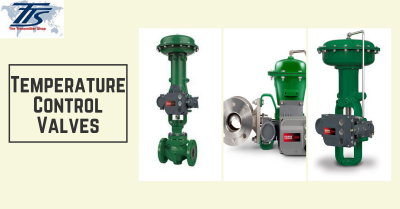
Maximize Energy Financial Savings and Comfort With Advanced Structure Automation Controls
In the realm of contemporary style and facility management, the assimilation of sophisticated building automation regulates stands as a crucial innovation. By harnessing the power of automation, structures can adapt, respond, and advance in methods that were as soon as unbelievable.
Energy Performance Perks
Energy performance advantages can dramatically minimize energy usage and operational prices in buildings. By applying energy-efficient practices and modern technologies, structure owners and drivers can attain considerable savings while likewise adding to environmental sustainability. Among the key advantages of enhancing power performance in structures is the reduction of energy bills. Energy-efficient systems, such as sophisticated structure automation controls, can optimize using resources like heating, lights, and cooling, resulting in reduced energy costs gradually.
Additionally, enhanced energy efficiency can lengthen the life expectancy of building devices and systems. By operating more effectively, heating and cooling systems, lighting fixture, and various other structure elements experience much less wear and tear, causing minimized maintenance and substitute costs. Furthermore, energy-efficient structures typically regulate greater home values and rental prices, giving long-term monetary advantages to owners.
Furthermore, power effectiveness can improve occupant comfort and productivity. Correctly regulated interior settings with optimum lights and thermal problems create an even more helpful and positive workspace, resulting in enhanced employee contentment and efficiency. Overall, the power efficiency benefits associated with advanced structure automation controls are complex, incorporating cost savings, environmental stewardship, and owner health.
Improved Convenience Control
Enhancing convenience control in structure settings calls for an advanced assimilation of innovative automation systems for optimum occupant well-being. By using advanced building automation controls, centers can tailor the interior environment to fulfill the specific demands and preferences of occupants. These systems enable specific regulation of temperature level, air flow, and lighting, creating a effective and comfy atmosphere. Occupant satisfaction and performance are closely linked to thermal comfort, making it important to have systems in position that can adjust to changing conditions in real-time.
By including these advanced controls, buildings can not only improve comfort yet likewise improve power effectiveness by enhancing system procedures based on actual occupancy and usage patterns. Ultimately, focusing on resident comfort via innovative automation systems leads to a more enjoyable and healthier interior atmosphere.
Operational Efficiency Improvements

Furthermore, the application of real-time surveillance and analytics devices makes it possible for building operators to recognize energy ineffectiveness and operational abnormalities immediately. By continually keeping an eye on power use patterns and system efficiency metrics, changes can be made in real-time to optimize energy usage and make certain peak functional efficiency. control valves. Additionally, including need reaction strategies into building automation controls can further boost functional effectiveness by dynamically readjusting power usage based on grid conditions and prices signals
Indoor Environment Optimization
Reliable interior environment optimization is an essential element of building automation controls, making certain owners' convenience and well-being while making the most of energy cost savings. By using sophisticated sensors and controls, developing automation systems can continually readjust and check temperature level, humidity levels, air top quality, and air flow to develop an optimum interior setting. Keeping constant and comfortable conditions not only enhances occupant complete satisfaction but also boosts efficiency and overall well-being.
Interior climate optimization also plays a vital duty in power effectiveness. By fine-tuning cooling, air flow, and heating systems based on real-time information and tenancy patterns, developing automation controls can considerably decrease power usage - control valves. Implementing methods such as demand-controlled ventilation and thermal linked here zoning can aid reduce power waste while guaranteeing that each location of the building gets the essential conditioning.

Sustainable Atmosphere Production
Structure automation regulates not only optimize indoor climate conditions for energy efficiency and go to the website passenger convenience however also lay the foundation for creating a sustainable setting through strategic management of resources and systems. By integrating advanced building automation innovations, such as sensors, actuators, and smart software application, centers can check and change energy use in real-time to reduce waste and minimize their carbon impact. These systems make it possible for predictive upkeep, recognizing prospective concerns before they intensify and maximizing equipment efficiency to boost long life and efficiency.
Moreover, sustainable atmosphere production prolongs past energy management to encompass water conservation, waste reduction, and indoor air high quality improvement. Structure automation controls can regulate water usage, identify leakages, and guarantee appropriate garbage disposal techniques, adding to general sustainability initiatives. Furthermore, by monitoring and controlling air flow and purification systems, these modern technologies boost resident wellness and efficiency while lowering power intake linked with HVAC procedures.
Final Thought
To conclude, progressed structure automation manages deal substantial advantages in terms of power savings, convenience control, functional efficiency, interior climate optimization, and creating a sustainable atmosphere. By applying these controls, structures can accomplish optimum efficiency while decreasing power intake and enhancing resident comfort. It appears that using innovative automation innovation is essential in enhancing structure performance and creating an extra sustainable future.
Power performance advantages can substantially decrease visit site power intake and operational costs in buildings. In general, the power performance advantages connected with advanced building automation controls are complex, including expense financial savings, environmental stewardship, and passenger wellness.
Furthermore, integrating demand feedback methods into structure automation controls can further boost operational efficiency by dynamically readjusting power usage based on grid problems and rates signals.
Structure automation regulates not only optimize indoor climate problems for power effectiveness and occupant comfort but also lay the foundation for producing a sustainable atmosphere via strategic monitoring of systems and sources.In final thought, advanced building automation regulates offer considerable advantages in terms of power financial savings, convenience control, functional effectiveness, interior environment optimization, and producing a lasting atmosphere.